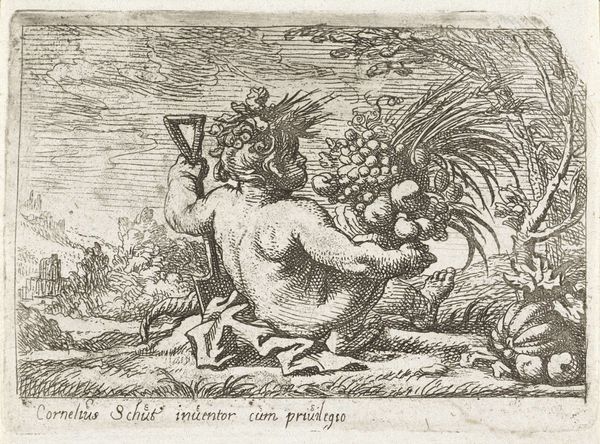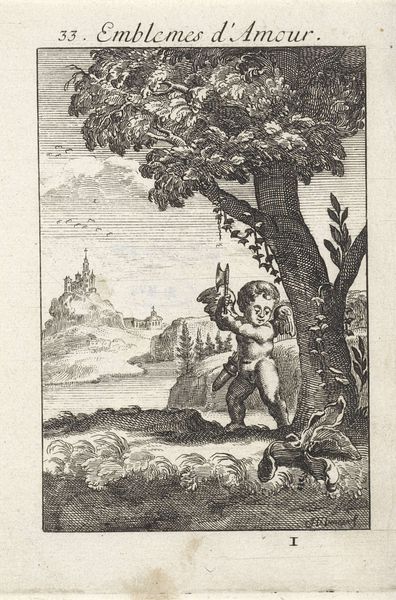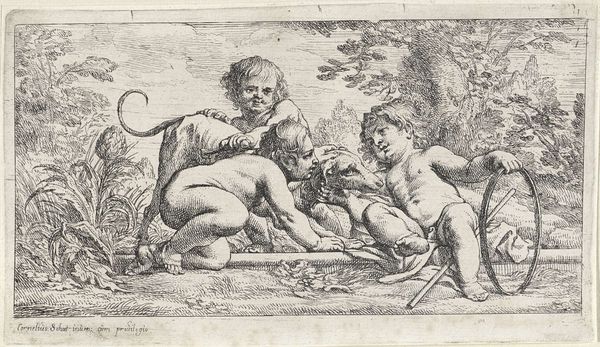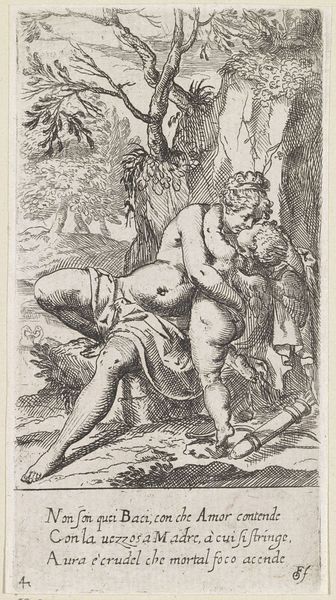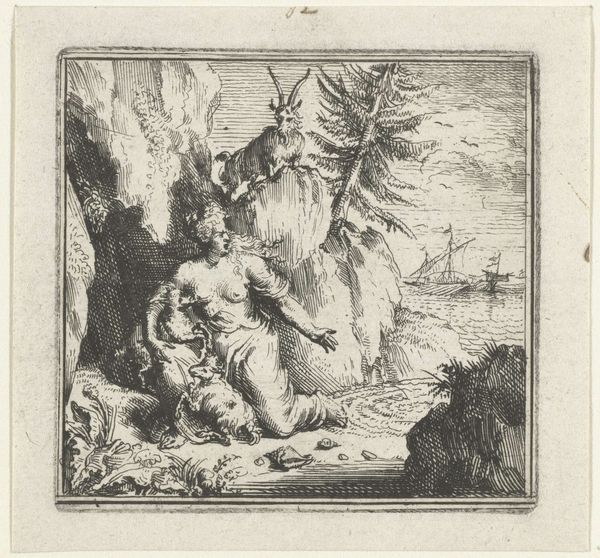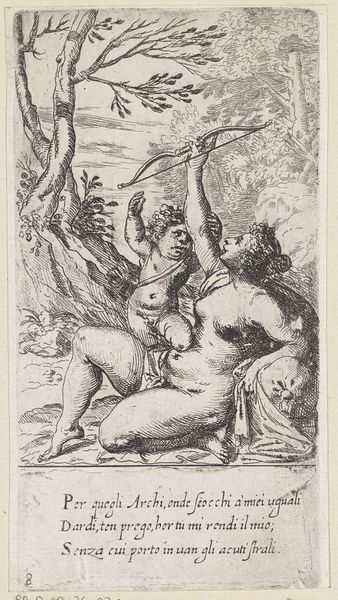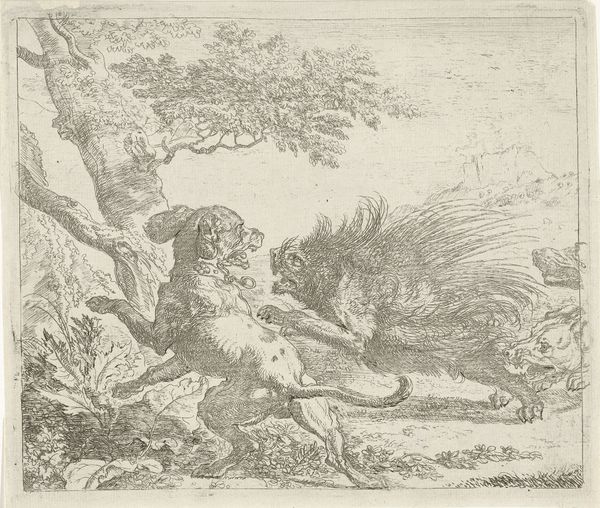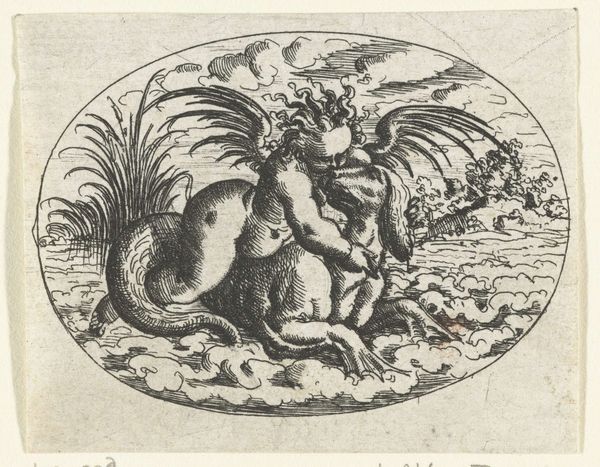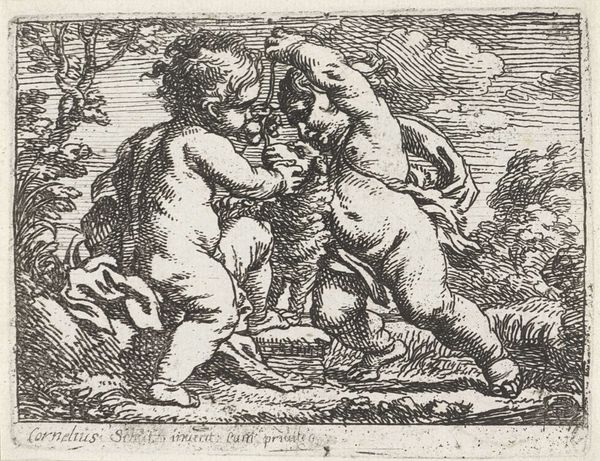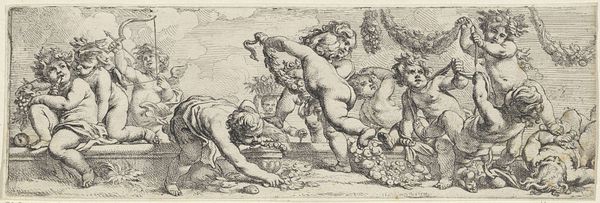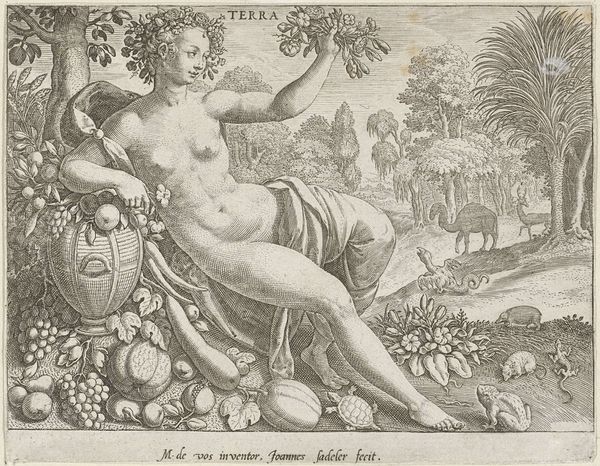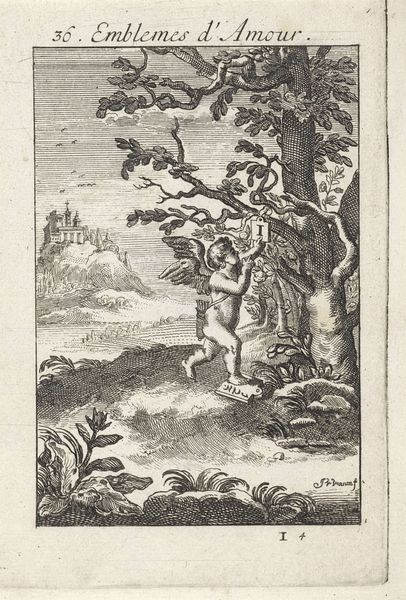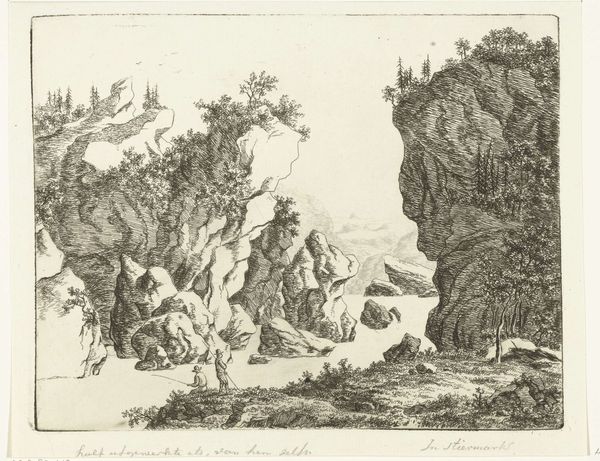
#
light pencil work
#
pen sketch
#
pencil sketch
#
old engraving style
#
personal sketchbook
#
pen-ink sketch
#
pen work
#
sketchbook drawing
#
pencil work
#
sketchbook art
Dimensions: height 71 mm, width 90 mm
Copyright: Rijks Museum: Open Domain
Curator: This delicate etching, simply titled "Aarde," meaning Earth, is an intriguing piece from the late 17th to early 18th century. Its artist is currently listed as anonymous here at the Rijksmuseum. Editor: My first impression is of abundance tempered by fragility. There’s a sort of rough innocence to the line work, which also renders a weighty-looking infant nearly collapsing beneath the harvest. Curator: It’s tempting to view this through the lens of social and political commentary. The sheer weight of the fruits of the earth are placed upon this small, naked child. What burdens are we placing on future generations, especially concerning the distribution of resources and the realities of labor? Editor: Well, certainly such symbolic readings were common during that era. Think about the development of Dutch identity, particularly in relation to agriculture, land reclamation, and global trade, as well as the politics surrounding ideas about plenty and overabundance. Were printmakers attempting to both represent and shape those discourses? Curator: Exactly! Also consider that the drawing implement clutched in the child's other hand is most likely a builder's triangle, suggesting humanity's imposition on the land—perhaps, a signal to reflect on who benefits and at what costs. Even the ambiguous structures in the distant landscape hint at the complexities of early urbanization and land ownership. Editor: And there's definitely a dialogue to be had about the very style here, too. Look at the delicate sketch work! Such accessible prints and sketches were instrumental in conveying and normalizing very particular ideas across a broader section of Dutch society. They influenced perception. Curator: It is thought-provoking to see these visual languages translated across centuries, allowing us a glimpse into the values, contradictions, and power structures embedded in the art of the past. It reminds us that art is not a neutral reflection, but rather an active participant in shaping our understanding of the world. Editor: Indeed. This sketch is more than just an aesthetically pleasing object; it's a lens through which we can examine the intricate tapestry of history and human interaction with the Earth.
Comments
No comments
Be the first to comment and join the conversation on the ultimate creative platform.
